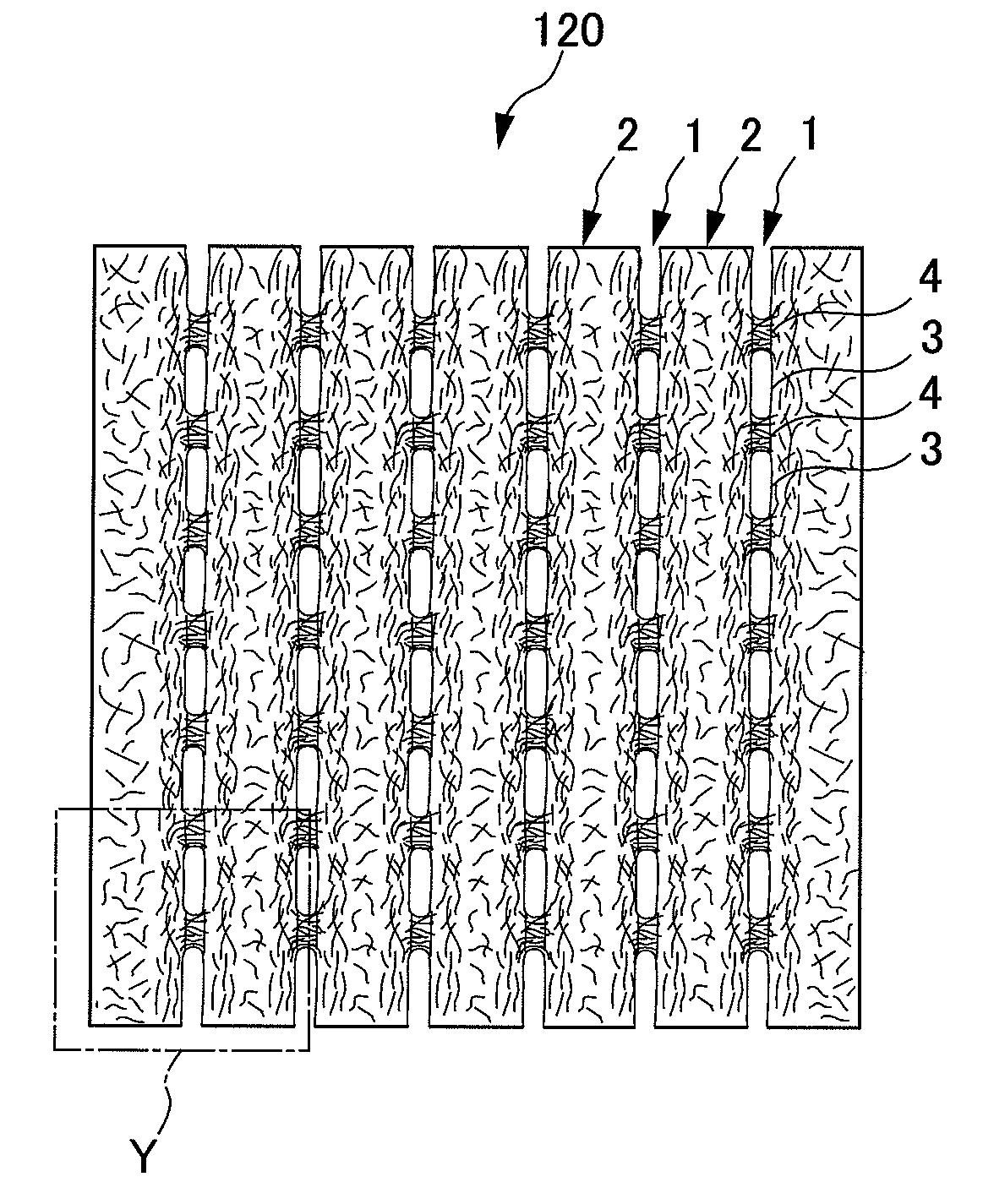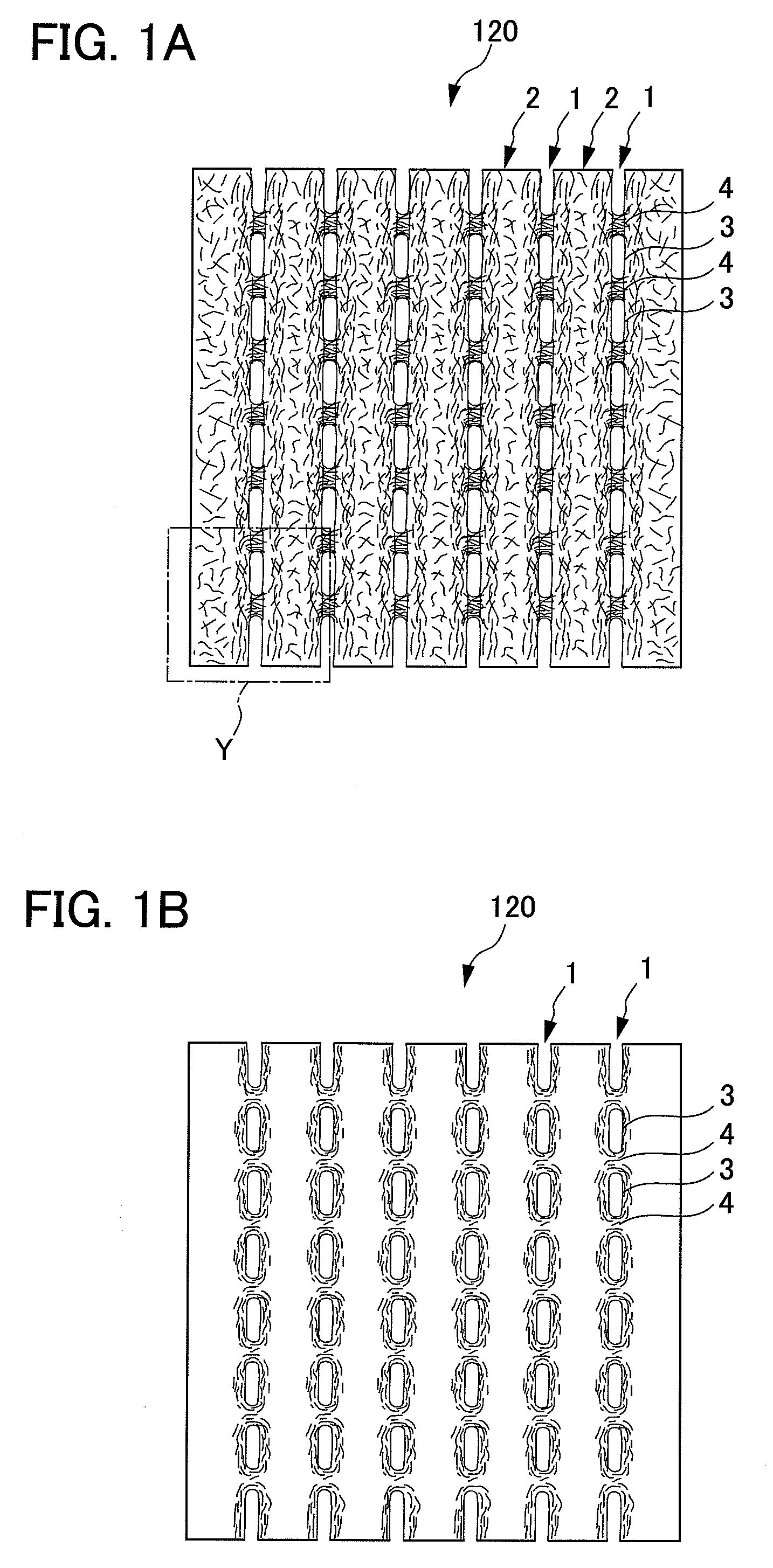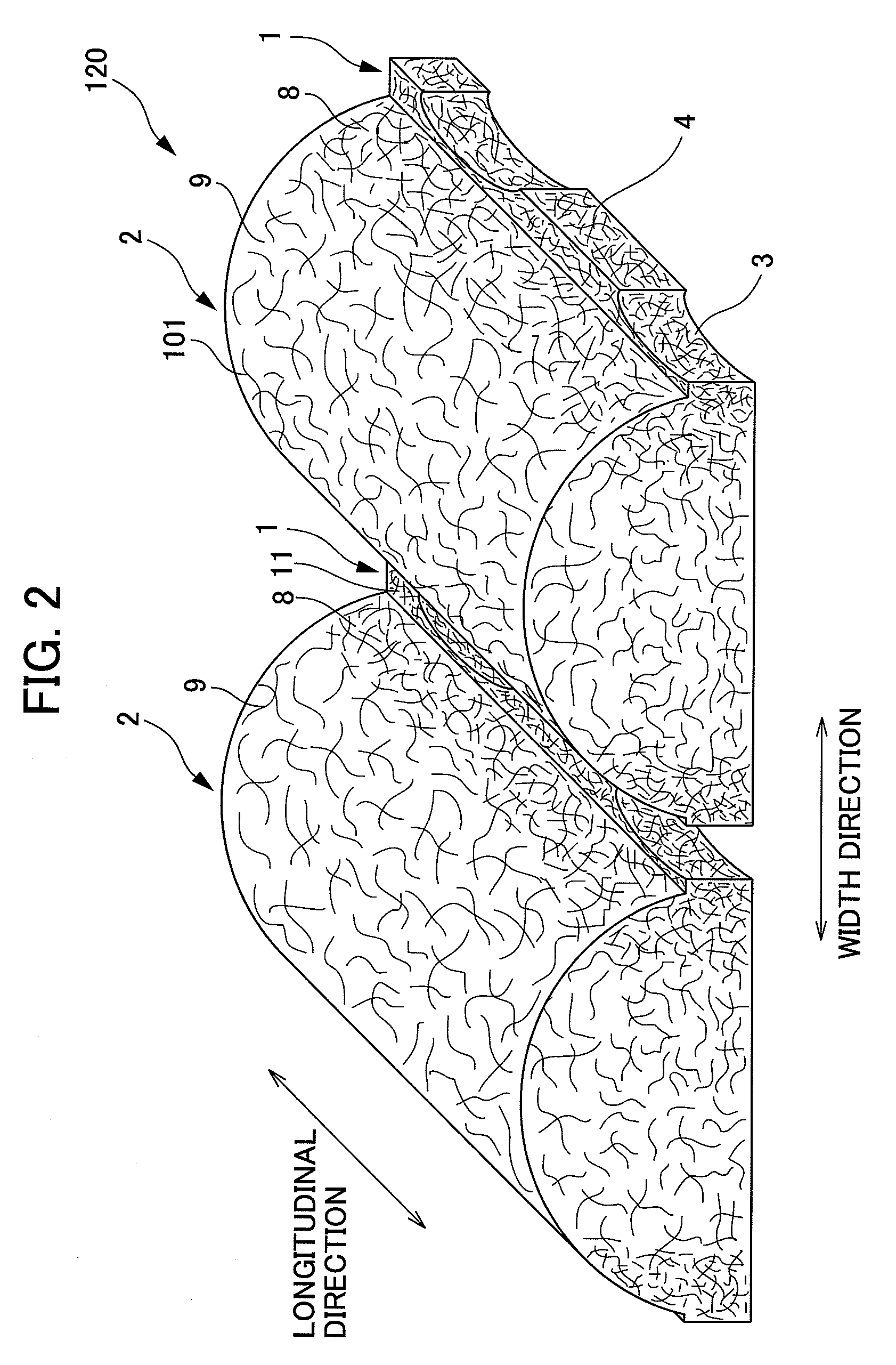Nonwoven fabric
a technology of nonwoven fabrics and fibers, applied in the field of nonwoven fabrics, can solve the problems of soiling the skin of users, not adjusting the orientation or the arrangement of fibers, and affecting the comfort of users
- Summary
- Abstract
- Description
- Claims
- Application Information
AI Technical Summary
Benefits of technology
Problems solved by technology
Method used
Image
Examples
third embodiment
2.2. Third Embodiment
[0163]FIGS. 13 and 14, explain a third embodiment of the nonwoven fabric according to the present invention.
2.2.1. Nonwoven Fabric
[0164]As shown in FIG. 13, the nonwoven fabric 174 in this embodiment is different from that in the first embodiment in that the whole of the nonwoven fabric 174 undulates in a wavelike manner. The present invention will be described below with high priority placed on points different from those in the first embodiment.
[0165]The nonwoven fabric 174 in this embodiment is formed having wavelike undulations so that the whole of the nonwoven fabric 174 may be roughly orthogonal to such a direction that the groove portion 1 and the convex portion 2 extend.
2.2.2. Manufacturing Method
[0166]The method for manufacturing the nonwoven fabric 174 in this embodiment is the same as in the first embodiment, however, is different in a mode of the supporting member 280 as a permeable supporting member. The supporting member 280 in this embodiment is a...
fourth embodiment
2.3. Fourth Embodiment
[0173]FIG. 15 explains a fourth embodiment of nonwoven fabric according to the present invention.
[0174]As shown in FIG. 15, nonwoven fiber 176 according to this embodiment is different from the first embodiment in that it has second convex portions 22 which are thinner than the convex portions 2. The fourth embodiment will be described below with high priority placed on points different from those in the first embodiment.
2.3.1 Nonwoven Fabric
[0175]A plurality of groove portions 1 are formed in parallel to each other on one side of the nonwoven fiber 176. A plurality of convex portions 2 and a plurality of convex portions 22 are alternately positioned between a plurality of groove portions 1, respectively. The convex portions 2 and the second convex portions are formed in parallel to each other in the same way as for the groove portions 1. Moreover, there are formed open portions 3 and joining portions 4 in a groove portion 1.
[0176]The convex portions 2 and the ...
fifth embodiment
2.4. Fifth Embodiment
[0181]FIGS. 16 and 18, explain a fifth embodiment of the nonwoven fabric according to the present invention. The fifth embodiment according to the present invention is different from the first embodiment in that joining portions 4 recessed in the thickness direction. The fifth embodiment will be described below with high priority placed on points different from those in the first embodiment.
2.4.1. Nonwoven Fabric
[0182]As shown in FIGS. 16 to 18, nonwoven fiber 178 according to the fifth embodiment is formed with groove portions 1 and convex portions 2 on one side thereof. The groove portion 1 is formed with a plurality of open portions 3 at predetermined intervals.
[0183]Between open portion 3 and neighboring open portions 3 thereof in the groove portion 1, there are formed a plurality of recessed portions 44 recessed in the nonwoven fiber 178 in the thickness direction. The bottom of each of the recessed portions 44 is lower than the groove portion 1 in thicknes...
PUM
| Property | Measurement | Unit |
|---|---|---|
| length | aaaaa | aaaaa |
| density | aaaaa | aaaaa |
| height | aaaaa | aaaaa |
Abstract
Description
Claims
Application Information
 Login to View More
Login to View More - R&D
- Intellectual Property
- Life Sciences
- Materials
- Tech Scout
- Unparalleled Data Quality
- Higher Quality Content
- 60% Fewer Hallucinations
Browse by: Latest US Patents, China's latest patents, Technical Efficacy Thesaurus, Application Domain, Technology Topic, Popular Technical Reports.
© 2025 PatSnap. All rights reserved.Legal|Privacy policy|Modern Slavery Act Transparency Statement|Sitemap|About US| Contact US: help@patsnap.com



